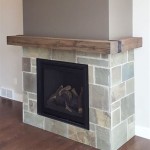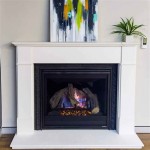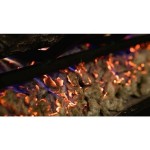Ventless Ethanol Fireplace Reviews: A Comprehensive Guide
Ventless ethanol fireplaces have emerged as a popular alternative to traditional wood-burning or gas fireplaces. They offer a blend of aesthetic appeal, ease of installation, and relative environmental friendliness, making them an attractive option for homeowners, renters, and businesses alike. This article provides a comprehensive overview of ventless ethanol fireplaces, examining their features, benefits, potential drawbacks, and reviewing key considerations for prospective buyers.
Unlike conventional fireplaces that require a chimney or flue for ventilation, ventless ethanol fireplaces operate by burning liquid ethanol fuel, a denatured alcohol derived from renewable sources like corn or sugarcane. The combustion process produces primarily carbon dioxide, water vapor, and heat, with minimal smoke, soot, or ash. This eliminates the need for venting, significantly simplifying installation and expanding placement options within a space.
The design flexibility of ventless ethanol fireplaces is a significant draw. They are available in a wide range of styles, including freestanding units, wall-mounted models, tabletop fireplaces, and inserts designed to be integrated into existing fireplace openings. This versatility allows consumers to select a fireplace that complements their existing décor and spatial constraints. The aesthetic appeal is further enhanced by the visible flame, which provides a warm and inviting ambiance. The absence of a chimney also means that virtually all the heat produced stays in the room, making them relatively efficient at warming smaller spaces.
Key Point 1: Understanding the Benefits of Ventless Ethanol Fireplaces
Ventless ethanol fireplaces offer several compelling advantages. The most prominent is the ease of installation. Without the need for venting, installation is often as simple as placing the unit in the desired location and adding fuel. This makes them a practical choice for apartments, condos, or homes where installing a traditional fireplace would be prohibitively expensive or impossible. The lack of venting also means that they can be moved relatively easily, offering flexibility in interior design and seasonal adjustments.
Another significant benefit is the relatively clean burning process. Ethanol fuel produces minimal emissions compared to wood or fossil fuels. While the carbon dioxide produced is still a greenhouse gas, the overall environmental impact is generally considered to be lower, especially when using ethanol derived from sustainable sources. This makes them a more environmentally conscious choice for those seeking to reduce their carbon footprint.
Furthermore, ventless ethanol fireplaces are often more affordable than traditional fireplaces. The absence of venting requirements reduces installation costs, and the units themselves can be purchased at a range of price points to suit different budgets. The maintenance requirements are also minimal, typically involving only occasional cleaning of the burner and surrounding surfaces. The aesthetic appeal of a real flame without the mess and hassle of wood-burning fireplaces is another significant factor driving their popularity.
Finally, the design versatility of ventless ethanol fireplaces provides a significant advantage. They are available in a variety of styles, sizes, and finishes, allowing consumers to select a model that complements their existing décor. From contemporary wall-mounted units to rustic freestanding models, there is a ventless ethanol fireplace to suit virtually any taste and spatial requirement.
Key Point 2: Addressing Potential Drawbacks and Safety Considerations
While ventless ethanol fireplaces offer numerous advantages, it is essential to acknowledge their potential drawbacks and address safety considerations. The primary concern revolves around indoor air quality. Although ethanol burns relatively cleanly, it still produces carbon dioxide and water vapor. In poorly ventilated spaces, these emissions can lead to elevated levels of carbon dioxide and humidity, potentially impacting air quality and causing discomfort or health issues. Adequate ventilation is crucial when operating a ventless ethanol fireplace. Opening a window or ensuring proper air circulation can mitigate these risks.
Another concern is the flammability of ethanol fuel. While ethanol fireplaces are designed with safety features to minimize the risk of accidents, it is crucial to handle ethanol fuel with care. Spills can create a fire hazard, and improper storage can lead to accidents. It is essential to store ethanol fuel in a cool, dry place, away from heat sources and open flames. Always follow the manufacturer's instructions for filling and operating the fireplace.
The heat output of ventless ethanol fireplaces is generally lower than that of traditional fireplaces. While they can effectively warm smaller spaces, they may not be sufficient to heat larger rooms or entire homes. Consumers should carefully consider the size of the space they intend to heat and select a fireplace with an appropriate BTU (British Thermal Unit) rating. It’s important to remember these are more for ambiance than primary heating.
Furthermore, the cost of ethanol fuel can be a factor to consider. While the initial investment in a ventless ethanol fireplace may be lower than that of a traditional fireplace, the ongoing cost of fuel can add up over time. The price of ethanol fuel varies depending on the supplier and the quantity purchased. Consumers should factor in the cost of fuel when evaluating the overall cost-effectiveness of a ventless ethanol fireplace. The fuel itself must be specifically formulated for these fireplaces and not confused with alternatives.
Lastly, there are some regional restrictions to consider. Some states and municipalities have regulations governing the use of ventless ethanol fireplaces. It is essential to check local building codes and fire regulations before purchasing and installing a ventless ethanol fireplace to ensure compliance.
Key Point 3: Reviewing Key Features to Consider Before Purchase
Before purchasing a ventless ethanol fireplace, several key features should be carefully considered. The first is the size and style of the fireplace. Consumers should select a model that complements their existing décor and spatial constraints. Wall-mounted units are ideal for smaller spaces, while freestanding models can add a focal point to larger rooms. Tabletop fireplaces are a good choice for adding ambiance to dining tables or coffee tables. Consider the material of construction as well. Stainless steel is durable and gives a modern look, while powder-coated options are great for a variety of colors.
The BTU rating of the fireplace is another important factor to consider. The BTU rating determines the amount of heat the fireplace produces. Consumers should select a fireplace with a BTU rating that is appropriate for the size of the space they intend to heat. Overestimating the BTU rating can lead to overheating, while underestimating it can result in insufficient heating. Many retailers offer guidance on BTU requirements based on room size.
The burn time of the fireplace is also a relevant consideration. Burn time refers to the length of time the fireplace can operate on a single filling of ethanol fuel. Burn times vary depending on the size of the fuel reservoir and the intensity of the flame. Consumers should select a fireplace with a burn time that meets their needs. The fuel tank capacity will directly influence burn time.
Safety features are paramount. Look for fireplaces that include safety features such as flame arrestors, which prevent fuel spills from igniting outside the burner, and automatic shut-off mechanisms, which extinguish the flame if the fireplace is tipped over or if carbon dioxide levels exceed safe limits. These features can significantly reduce the risk of accidents. Consider models that have been tested and certified by independent safety organizations.
Finally, the ease of use and maintenance of the fireplace should be considered. Look for fireplaces that are easy to fill, light, and operate. The maintenance requirements should also be minimal, typically involving only occasional cleaning of the burner and surrounding surfaces. Read user reviews to get insights into the real-world experience of using the fireplace.
In summary, ventless ethanol fireplaces offer a compelling combination of aesthetic appeal, ease of installation, and relative environmental friendliness. However, it is essential to carefully consider their potential drawbacks and address safety considerations. By understanding the benefits, risks, and key features of ventless ethanol fireplaces, consumers can make informed decisions and select a model that meets their specific needs and preferences. Careful attention to ventilation, fuel handling, and adherence to manufacturer's instructions are crucial for safe and enjoyable operation.
Ultimately, the decision to purchase a ventless ethanol fireplace depends on individual circumstances and priorities. Weighing the advantages and disadvantages outlined above will enable prospective buyers to determine whether this type of fireplace is the right choice for their home or business.

Milan 24 Inch Ventless Wall Mounted Bio Ethanol Fireplace Ew

Expert Review Of Ignis Ethanol Fireplaces Modern Blaze

Homcom Portable Tabletop Ventless Bio Ethanol Fireplace Broe Finish Com

Regal Flame Mora 47 Inch Ventless Wall Mounted Bio Ethanol Fireplace

Homcom 43 25 In X 5 Ethanol Fuel Fireplace At Com

Ethanol Burner Inserts Ventless Fireplaces Ignis

Collection Ventless Ethanol Fireplaces Fire Pits Ecosmart

Northwest 2 Pack Rectangular Indoor Or Outdoor Ventless Bio Ethanol Tabletop Fireplace Black Com

Eco Feu Wynn 33 5 Ul Wall Mounted Ethanol Fireplace

Regal Flame Et7001blk Eden Ventless Tabletop Portable Bio Ethanol Fireplace In Black 1 Foods Co
Related Posts








